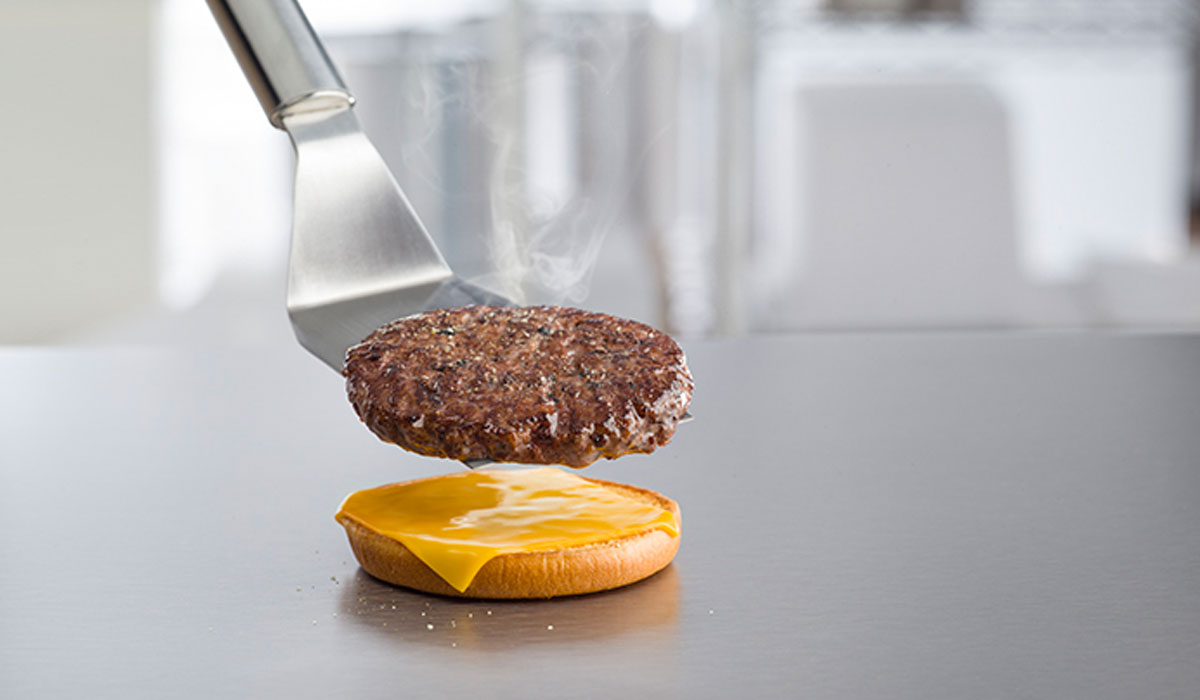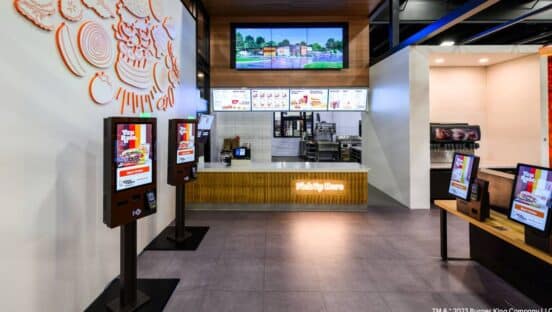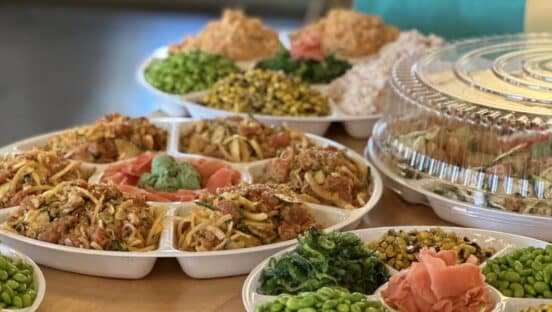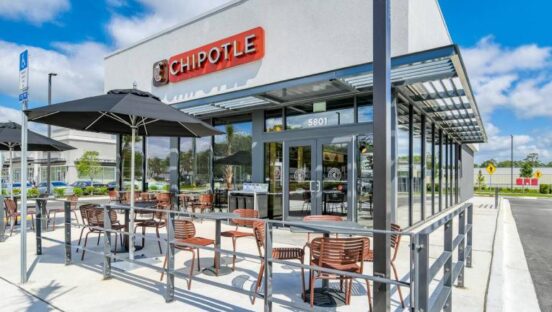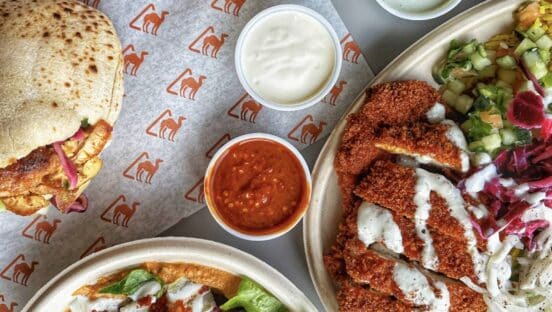








The future changes at COVID speed
Reporting on foodservice trends to watch for is something of an easy target. Rarely do trends suddenly emerge and immediately make an impact across hundreds of thousands of restaurants. No, food trends tend to move a bit more like rolling waves, building on the horizon before slowly making their way across the industry and crashing onto the sands of ubiquity.
Until, that is, 2020.
The COVID-19 pandemic has truly been the kind of black-swan event that radically changes consumer lifestyles. And the longer the pandemic has dragged on, the more entrenched these necessary changes have become, with the experts saying this will have serious implications on long-term customer behavior.
“We’re talking about six months of forced changed behavior,” says Maeve Webster, president at food consultancy Menu Matters. “It only takes six months to change habits, and we’re at that point.”
So what exactly should we expect to change? What will consumers want from their favorite brands in a post-pandemic future, and how will they choose to engage with them? We summoned the help of Webster and eight other foodservice experts to find out.
Off-premises as a priority
Spoiler alert: Off-premises strategies are here to stay. Of course, that’s no surprise to anyone in the restaurant industry. But the sheer amount of business being conducted through off-premises channels today by necessity is recalibrating guests’ ongoing habits—and shifting operator priorities, as well.
“Look at how many quick-service restaurants right now, given the opportunity to reopen dining rooms, are choosing not to because they’ve already made a pivot to optimize that off-premises experience,” says David Portalatin, food industry advisor for The NPD Group.
This immense demand for everything served off-premises and contactless will inevitably lead to those channels adapting and improving, which will in turn shift consumer expectations for convenience. Michael Whiteman, president of consultancy Baum+Whiteman, points to the drive thru as an example: In the not-too-distant future, voice recognition, facial recognition, and license-plate readers will know everything about the customer when they pull in the lane.
“They’ll upsell you before you can say no,” he says. “They’ll automatically bill your credit card and recognize you next time you’re there. Soon they’ll alert you to a special item tailored to your taste while you’re driving by a specific location.”
Data shows that consumers’ comfort level is indeed trending more toward off-premises occasions and away from anything that might be considered unsafe. Sharon Olson, president of Olson Communications and Culinary Visions Panel, says 91 percent of consumers her firm surveyed said they would be more hygiene-conscious moving forward, and 65 percent said they would be reluctant to return to large food halls or marketplace environments. Meanwhile, 54 percent of respondents in three-plus-person households “said the drive-thru window at my favorite restaurants feels like home to me,” she says.
Gary Stibel, CEO of New England Consulting Group, has coined the term “DeLocation” to describe the foodservice experience of the future where the only real estate that matters is where the customer is.
“In the old days, the industry was location, location, and location,” he says. “Even a bad restaurant in a good location would thrive. Well, it doesn’t matter anymore, because the only location that’s important is where I am. And I don’t care if the restaurant is across town or non-existent … I want what I want here in 30 minutes, whether it’s a burger or a pizza.”
This notion has already given rise to the ghost-kitchen trend, and Stibel sees that trend progressing to a point where a business could build out an empty space—say, a closed department store—with a kitchen prepared to make any food, thereby creating a one-stop shop for pickup customers and delivery drivers alike.
Meal kits
Even though the vast majority of restaurant sales in the last six months have been consumed outside the four walls, it hasn’t stopped operators from creating a fun experience with their menu.
“From beautifully curated experiential boxes to … Zoom-guided wine tastings and chef-catered family meals, restaurateurs are finding ways to share the love of food with consumers outside the confines of their restaurant,” says Liz Moskow, principal of consultancy Bread & Circus.
For limited-service restaurants, meal kits have become one of the most successful ways to create that experience. Not only do they satisfy the demand for something fun, but they also give guests something to do with their family at a time when most people are staying home—and many of them are learning to cook together.
Olson says the pandemic has given many families an opportunity to reconnect with each other over meals, and that’s likely something they’ll fight to keep; 80 percent of consumers report that family meal times were a source of pleasure during quarantine, and 76 percent say they were inspired to learn new cooking techniques. And Amanda Topper, associate director of foodservice research at Mintel, says 62 percent of customers want restaurants to continue selling meal kits after the pandemic is over, according to Mintel’s data. She adds that keeping those kinds of packaged goods on the menu is not only a way to offer convenience to guests, but also a way to compete with retail brands like grocery stores.
New value propositions
The limited-service restaurant industry has always planted its flag in offering value. But the definition of value has evolved over time—including during the pandemic—and that evolution will continue to be critical to success, particularly if the U.S. is mired in a recession for years to come.
Mark Brandau, group manager for market research firm Datassential, says the meal bundles that many companies rolled out in the pandemic’s early days were a good example of rethinking value for the times. That kind of approach will be smarter than simply deep discounting, he says, which is what worked for the first few years of the Great Recession.
“For the most part, we saw everybody probably going a little bit too far into the discounting, to a level where they had a really hard time getting out of that even once the recovery gained a little bit of steam,” Brandau says of the value wars of a decade ago.
Mintel’s Topper also thinks a new approach to value will be critical for the coming years, because dining out is among the first things consumers will cut when they reduce their spending. She suggests tiered value menus with bundling and mix-and-match options as a way to provide appeal for a variety of diners. The value of per-person cost for family meals will be an attractive selling point, she adds. For example, multi-daypart BOGOs—like offering a free breakfast with a dinner order—could become value in the consumer’s eyes. “Emphasizing the time and effort saved from not having to plan, shop for, and prep a home-cooked meal are all areas that can create a sense of value in the eyes of consumers,” Topper says.
A balanced approach to health
Health and wellness have been a top focus of the restaurant industry now for well over a decade, though it’s divided into several micro trends that have each dug their claws into foodservice, from keto to paleo and plant-based to functional foods. COVID-19 has further thrust wellness into the spotlight, as those with underlying conditions like obesity were especially at risk of critical illness and death from the virus.
In turn, restaurants should continue to make healthful foods a priority—to a point. “From a health point of view, increasing the healthfulness without sacrificing the indulgence, comfort, or appeal of items is important,” Menu Matters’ Webster says. “Functional foods, beverages, [and] ingredients that focus on immunity, stress, sleep, anxiety, mood, and mental acuity are going to be hot at least for the next few years.”
Could that balance of health and indulgence be executed through the plant-based meat alternatives that grew in popularity before the pandemic? Maybe. But NPD’s Portalatin says the consumption of fruits and vegetables over the years has been pretty stable.
“Some of us recognize that we need more veggies in our diet, but we don’t really want to eat more veggies, so we look to these other new kinds of foods, whether it’s snacks that rely on healthier plants or higher-protein plants,” he says. The meat analogs like the Impossible Burger and Beyond Meat have grown because they are “building a better mousetrap,” Portalatin says, but they’re unlikely to take over menus in a major way. Americans eat around 280 million servings of veggie sandwiches or burgers in restaurants per year, he says, compared with about 8 billion animal-protein burgers.
Still, Bread & Circus’s Moskow says the improvement in vegan offerings will continue to make that a significant niche within foodservice. “With interest rising in the vegan category, more products, establishments, and brands have emerged,” she says. “With variety comes competition and elimination of mediocrity. Today, you can get vegan meal kits, vegan fast food, vegan ghost brands, and mock meat and dairy vegan proteins that taste great and perform well.”
Restaurants as a comfort, indulgence, or reward
Even though health is still a priority for consumers, restaurants will primarily be a destination for indulgent items, the experts say, particularly in an anxious season and one in which they’re doing more cooking at home.
“We have doubled down on the comfort aspects of the away-from-home meal occasion,” Portalatin says. “That’s not to say that consumers aren’t thinking about their health; we’re thinking a lot about health right now. … It’s just that when it comes to an eating occasion and we’re thinking about health, we’re more likely to turn to the refrigerator or the pantry.”
Olson says that while 83 percent of consumers are looking forward to healthier eating habits, 72 percent say a little bit of indulgence will likely be a part of their daily routine. That could be as simple as a daily cup of coffee at the local coffee shop, Brandau says, particularly now that many people are working from home for the foreseeable future.
“The coffee occasion is worth the trip for a lot of people who just need to get out of the house, need to have an affordable indulgence, like the $4 or $5 cup of coffee that used to be thought of as some self-indulgent thing for yuppies and high-income households,” he says. “But now, for a lot of people, that’s their chance to be in the car.”
Sustainable food and packaging
Similar to the health movement, sustainability has been a buzzword for restaurant operators for many years. But the pandemic has given sustainability a new urgency; with sales pivoting almost entirely to off-premises and with contactless service key to building trust with consumers, disposable cutlery and packaging suddenly surged in use. And with wildfires raging in the Western U.S. and hurricanes pummeling the Southeast, consumers are reminded nearly every day of the effect they have on the planet.
“Consumers are feeling conflicted over excess packaging and single-use plastics with the surge in online grocery delivery, though they are taking greater measures in reducing food waste given the rise in home meal prep,” says Melissa Abbott, vice president of The Hartman Group. “Despite higher costs associated with organics and food grown without GMOs, consumers are demonstrating a willingness to spend more for products that are believed to be safer for themselves and the planet during the pandemic.”
Moskow says consumers will “want to undo some of the harm they did as they were struggling to get by” during the pandemic. She says operators will need to enhance their packaging so it is not only lightweight and stands up to the rigors of delivery, but also is recyclable, minimal, and free of hazardous chemicals.
Double down on dinner
The pandemic had a drastic impact on dayparts. With millions of people working from home, the quick office lunch has temporarily become a thing of the past. And with most social activities and business travel canceled, a large share of the population is spending more time around the dinner table.
Portalatin says this is why pizza has performed so well during the pandemic; it travels well and is perfectly suited to large party sizes. He says operators will need to figure out how to translate those attributes to other cuisines in order to satisfy the need for more dinner business. It could prove to be a real boon for operations; Portalatin reminds that dinner is a more social daypart, and therefore nearly always leads to a higher check.
“Whether I’m solving for that entire meal with prepared foods or whether I’m solving for a portion of that meal—perhaps the entrée and then the consumer pairs it with other items—I think there are going to be opportunities to play all along that spectrum,” he says. “That’s the problem that everybody in America must solve today: What’s for dinner? And however you could be a part of that solution, whether you are the grocery store, whether you’re the restaurant operator, is going to be the key.”
Spicy and global foods
Just because so much attention is being paid to how customers eat doesn’t mean restaurants should ignore menu R&D. In fact, with so many options still available to consumers—particularly in the digital marketplace—brands would be smart to use menu innovation as a tool to rise above the competition.
“Fast feeders who trimmed and pruned their menus during the COVID crisis will be compelled to expand them again as more dining options open across America and as the competition becomes ferocious,” Whiteman says.
Several of the experts believe spicy and global foods could be the smartest direction for that R&D, as they were already trendy pre-pandemic and they provide some sense of adventure and discovery at a time when the in-store experience cannot.
“Consumer travel will be down, which often helps to drive interest in international cuisines,” Webster says. “We’ll always have fine-dining operators and authentic international cuisine operators who will introduce American consumers to new (for them) and interesting options, but the trend cycle that drives those ideas [and] concepts into the mainstream will likely slow down, so it will take longer for a trend to move from fine dining to mass market.”

